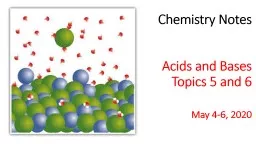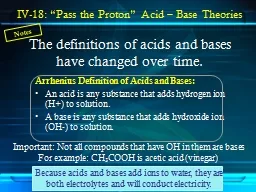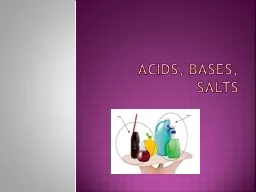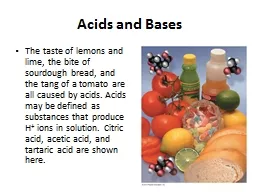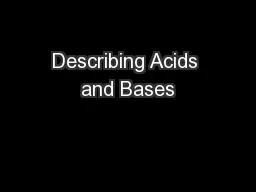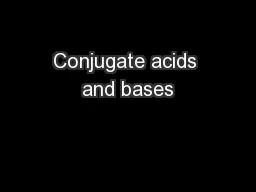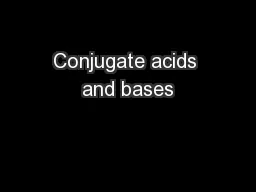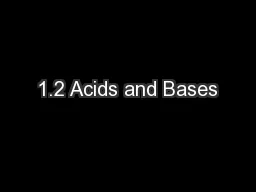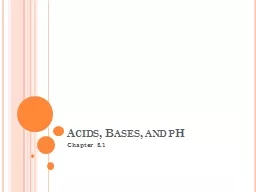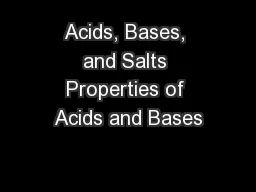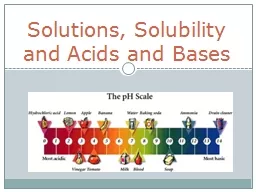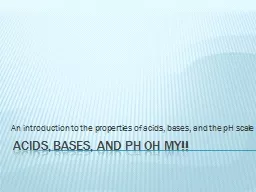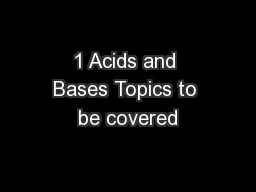PPT-Chemistry Notes Acids and Bases
Author : anastasia | Published Date : 2022-06-11
Topics 5 and 6 May 46 2020 As you go through the packet for this week you will see MANY familiar things Make sure to do ALL eight pages important What is
Presentation Embed Code
Download Presentation
Download Presentation The PPT/PDF document "Chemistry Notes Acids and Bases" is the property of its rightful owner. Permission is granted to download and print the materials on this website for personal, non-commercial use only, and to display it on your personal computer provided you do not modify the materials and that you retain all copyright notices contained in the materials. By downloading content from our website, you accept the terms of this agreement.
Chemistry Notes Acids and Bases: Transcript
Download Rules Of Document
"Chemistry Notes Acids and Bases"The content belongs to its owner. You may download and print it for personal use, without modification, and keep all copyright notices. By downloading, you agree to these terms.
Related Documents

